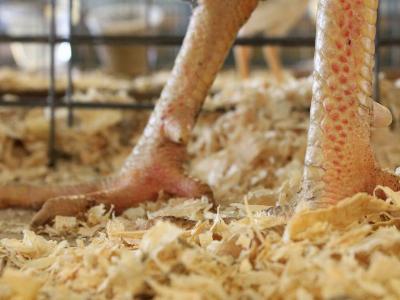Broiler wet litter solutions through feed formulation

Ioannis Mavromichalis, Ph.D., gives his views on poultry, pig and dairy nutrition based on his experience as a nutrition consultant with clients around the world.
Andrea Gantz
Poor feed design can cause wet litter, but the right nutrition can offer solutions.
Broilers and wet litter are a perennial problem that will not go away as long as we raise broilers the way we do now — on litter. Apart from the common causes due to disease, ventilation and watering problems, nutrition has a role to play. Nutrition, or rather poor feed design, can be the causative factor of wet litter, and likewise, nutrition can offer solutions to the same problem.
Let’s think first what causes wet litter through nutrition. Wet litter is caused by excess water in droppings. This means that birds either drink more water than they need, or they do not absorb as much as they should from the hindgut. The first is due to excess protein and minerals in the feed, both of which require extra water to be removed from the body. The same can be said for certain drugs. The second is due to certain feed components that trap water and prevent it from being reabsorbed — here the highly soluble, gel-like, properties of certain types of fibers come to mind.
So, how can nutrition resolve or ameliorate this problem? First, we can reduce the amount of offensive ingredients in formulas. However, this is often not easy due to economic reasons. Second, we can add certain additives that control the excess moisture or help in releasing trapped water.
Wet litter remains a problem for broiler production. Solutions abound, and the right combination of additives and re-formulation depend on the actual problem at hand, plus the available ingredients.
Ioannis Mavromichalis, Ph.D., is Nutrition Editor for WATTAgNet and Editor-in-Chief of Pig International.
Related news
 Understanding daily calcium cycle in layer hens
Understanding daily calcium cycle in layer hens Examining the daily intake and output of calcium in layer hens can aid us in designing a better feeding program that will prolong the egg production cycle while
 6 pullet feeding tips to increase egg production
6 pullet feeding tips to increase egg production Managing body weight for age is the key for maximizing lifetime performance in egg-layer pullets. A robust pullet will sustain peak productivity for longer
 5 broiler health priorities identified by USDA
5 broiler health priorities identified by USDA USDA’s National Institute of Food and Agriculture and Agricultural Research Service seek stakeholder input on what top broiler health research priorities should